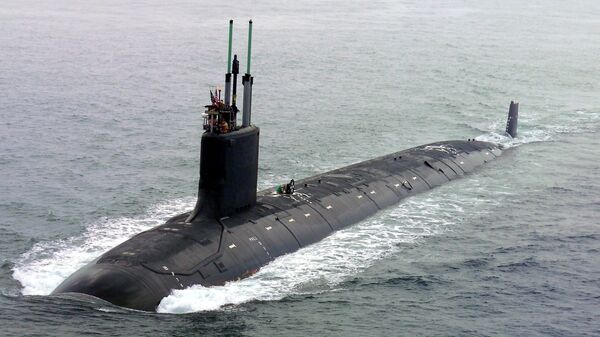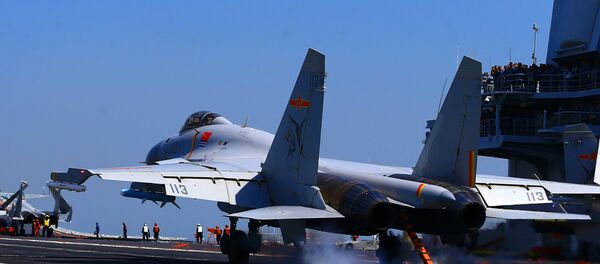On Sunday, two US warships, the Higgins guided-missile destroyer, and the Antietam guided-missile cruiser sailed within 12 nautical miles of the disputed islands in the South China Sea. In response, the Chinese military said it dispatched military aircraft to identify the US warships and warned them to leave, China’s Ministry of Defense said in a statement.
The latest naval standoff in the South China Sea came after the United States rescinded an invitation to China to take part in a major naval drill in the Asia Pacific region scheduled to be held in the summer, accusing China’s "continued militarization" of serving to raise tensions and destabilizing the region.
In addition to constructing military facilities and deploying missile defenses on disputed islands in the South China Sea, Chinese bombers, including the long-range H-6K strategic bomber, landed in the disputed territory for the first time earlier this month.
Total Competition
As military tensions continued to escalate in the South China Sea, the latest military standoff could signal that China and United States are headed toward "absolute competition" in bilateral relations, political analysts told Sputnik.
"Basically, bilateral relations between China and the United States are going through fundamental changes, as the two nations are heading toward ‘absolute competition’ in the future. The United States has always been unhappy about China’s growing military presence in the South China Sea and has to take actions to respond. It’s natural for the United States to send its warships to stress the ‘freedom of navigation,’" Arthur Ding, director of the Institute of International Relations under the National Chengchi University in Taipei, told Sputnik.
READ MORE: China Scrambles Jets, Sends Ships to Warn Off US Navy From S China Sea
"Geologically speaking, China is much closer to the South China Sea and has a lot more actions to take. For the United States, what it can do is rather limited. Even if the United States sends its aircraft carriers over, it doesn’t make any difference as long as it’s not willing to engage in military conflict with China. No matter what it dispatches, it’s more of a posture. China has already built its military facilities on the disputed islands. Unless the United States decides to destroy those Chinese military outposts, China couldn’t care less about US warships’ presence," he said.
Other maritime analysts argued that China seems to be taking the upper hand in its military strategy in the South China Sea, as the United States appears to be simply responding to Chinese actions.
"The fact of the matter is that short of military action, the needle is unlikely to be moved in the South China Sea and Chinese military installations and weapons systems on the artificial islands are here to stay. Beijing’s salami-slicing strategy is clearly working. Going forward, expect the Chinese to respond to the latest moves from the United States through further inroads in the South China Sea. China seems to have an upper hand in the South China Sea strategic competition as Washington has been trying to play catch-up with Beijing’s moves," Ben Ho, a naval analyst with the Military Studies Program at Singapore's S. Rajaratnam School of International Studies, told Sputnik.
Military Conflicts Unlikely
Despite escalating tensions amid the naval standoff, military clashes are unlikely to erupt in the South China Sea as warships between both nations come in close contact with one another, the Taiwan-based scholar suggested.
"The situation is very similar to what happened during the Cold War between the Soviet Union and the United States. The Soviet Union used to send long-range bombers to both the east and west coasts of the United States and would always attract US warplanes to intercept. But the United States never shot down any Soviet warplanes. The same applies to the situation today. When the US warships sail within 12 nautical miles of the disputed Islands, a move that Beijing claims to violate its sovereignty, China could only issue warnings, instead of attacking those warships right away. It’s like a cat-and-mouse game," Ding said.
READ MORE: US Warships Enter Disputed South China Sea Waters, Beijing Slams Move
Ho, the Singapore-based analyst, agreed that military tensions could continue in the South China Sea without escalating into an all-out war.
"The situation in the South China Sea now depends on how far each side is willing to push the boundaries before one day, someone miscalculates or reaches a breaking point — with all its dire consequences. While two parties do not wish for war, recent tensions on the military front are unlikely to be resolved anytime soon," he said.
The expert expects Sino-US ties to experience strong headwinds in the months ahead.




